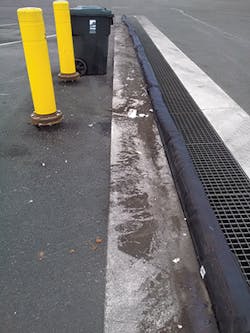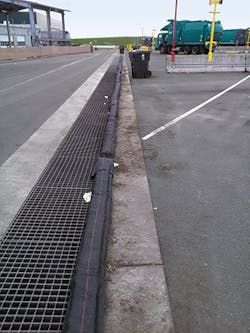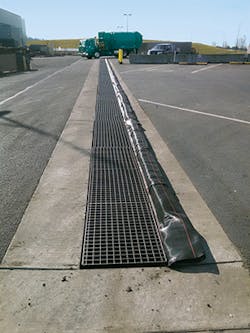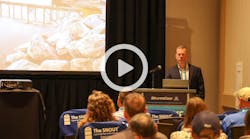Project Profile: Grate Expectations
Earlier this year, Jim Nunn was faced with a sediment control issue on the yard of the city of Tacoma, WA, Environmental Services Solid Waste facility. Sediment control around the facility was something he’d easily handled before with hay bales in swales along the landfill roads. In the fall of 2014, a new parking lot was constructed with a Filterra biofiltration system installed for sediment control.
It did not take very long to find out that the facility had more sediment than the biofiltration system could handle. During frequent rains, there were large amounts of sediment and debris being washed into the large drains at the bottom of the slope at the east end of the parking area. The sediment that had washed into the grate system was clogging the biofilters and compromising the effectiveness of their Filterra system. The in-grate filtration slowed to a near stop and caused the water to flood back over the grate and into the yard.
The Creative Solution
He knew there had to be a way to solve the flooding problem. He checked over his stormwater pollution prevention plan (SWPPP) and started to research creative solutions. He was having no luck. Then he received a sample of a flexible sediment barrier called DuraWattle from one of his colleagues, Chris Ott, a senior environmental specialist with the city of Tacoma. Nunn was initially very impressed with the overall design with the DuraWattle. After researching more about the design and applications of the wattle, he decided it would be a good fit for his drains.
The first benefit that caught Jim’s eye was the durability of the wattle and the fact that it was created to be driven over. This was clearly important as the drains were located at the entrance of the parking lot, and the facility has approximately 60 trucks that drive over the drains several times a day, according to Nunn.
Additionally, because the wattle is typically used as a perimeter control BMP, it is manufactured with a tail section to trench and backfill on soil or sidewalk applications to prevent undermining. This proved to be the final feature that enabled Nunn to fit the wattle to his needs.
“I realized I could adapt it to my needs by installing it backwards with the tail anchored down by the grate, behind the wattle rather than buried in the dirt in front of the wattle,” he says. “This enables the sediment to be trapped before entering the trench.”
He says that the only issues with durability have been in areas where drivers back onto the wattle and turn their wheels on top of it, causing the wattle to rip in those places. However, only two sections of wattle have had to be replaced to date.
He says he would recommend DuraWattle to others. “Besides being able to order and receive quickly, it is easy to work with, and I can see it would be advantageous to have available on work sites where you need to keep sediment out of the stormwater. We were able to adapt it to our needs here on our site; it’s very versatile.”




